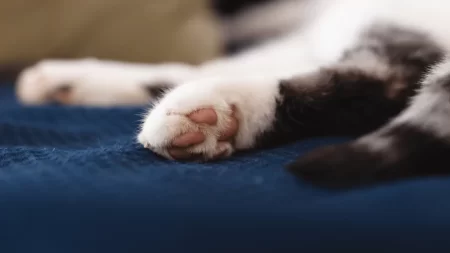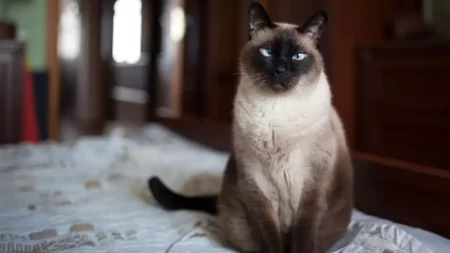If you seek a cat different from common domestic breeds, you may find interest in certain exotic cat breeds allowed as pets in select regions.
These cats have exceptional traits, both in terms of physical appearance and personality, setting them apart from the rest.
Below, you’ll find 13 exotic cat breeds that can be kept as pets, accompanied by relevant images and information for each breed.
1. Serval
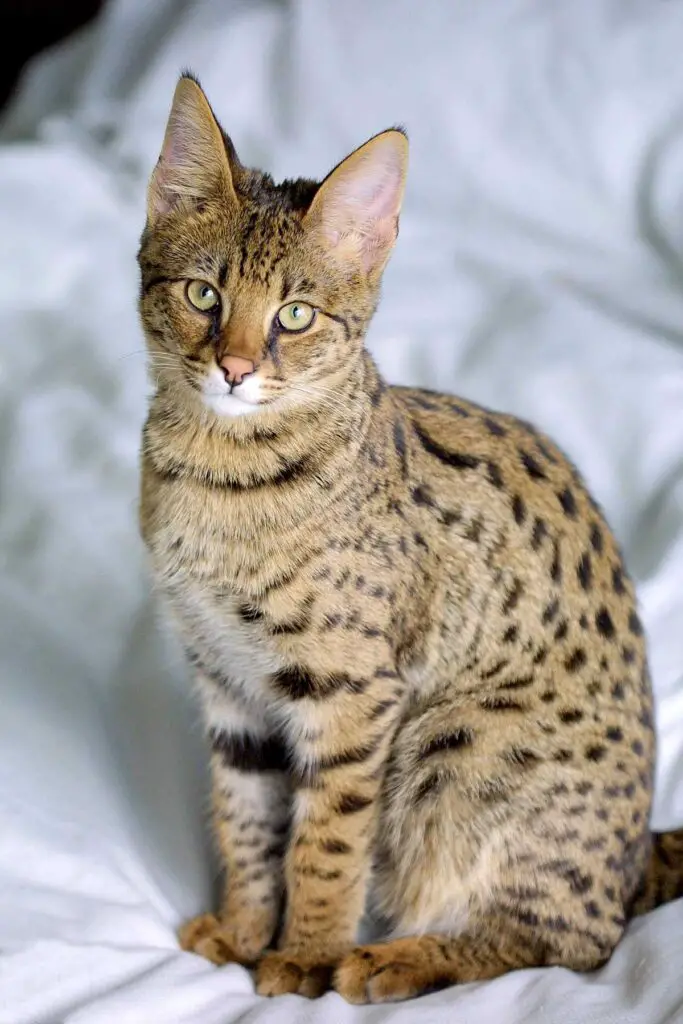
The serval cat, a medium-sized wild cat indigenous to Africa, has a slim body, elongated legs, prominent ears, and a spotted coat aiding their camouflage within the grasslands they frequent for hunting.
While not domesticated, some individuals opt to have the serval cat as an exotic pet.
Nevertheless, owning a serval cat entails numerous challenges and risks that necessitate careful consideration prior to making such a choice.
2. Caracal
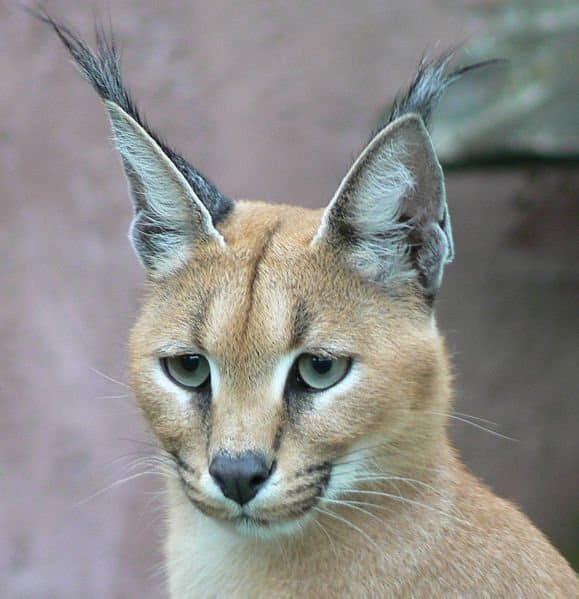
Some nations allow caracals as pets. Native to Africa, the Middle East, India, and Central Asia. Reddish-brown with black patterns on the face, ears, and legs.
Their owl-like ears have lengthy hair. The muscular and agile caracal hunts small animals, rats, and birds.
The caracal breed is a domestic-wild caracal mix. The 1980s saw the first US caracal breed. The caracal breed is wild-looking yet kind. Caracals weigh 15–35 pounds and grow to 2 feet.
3. Ocelot

A small wild cat found in Central and South America. They have a spotted coat that varies in color from yellow to brown.
They are a skilled climber that can hunt on trees and swim across rivers. They are territorial and mostly active at night.
They are known for their spotted coat and their long tails. Ocelots are excellent climbers, and they are known for their stealthy hunting style. They are also very curious, and they love to explore their surroundings.
Ocelots are solitary animals, and they only come together to mate. They are not typically seen in captivity, but they can be found in some zoos and wildlife parks.
4. Margay
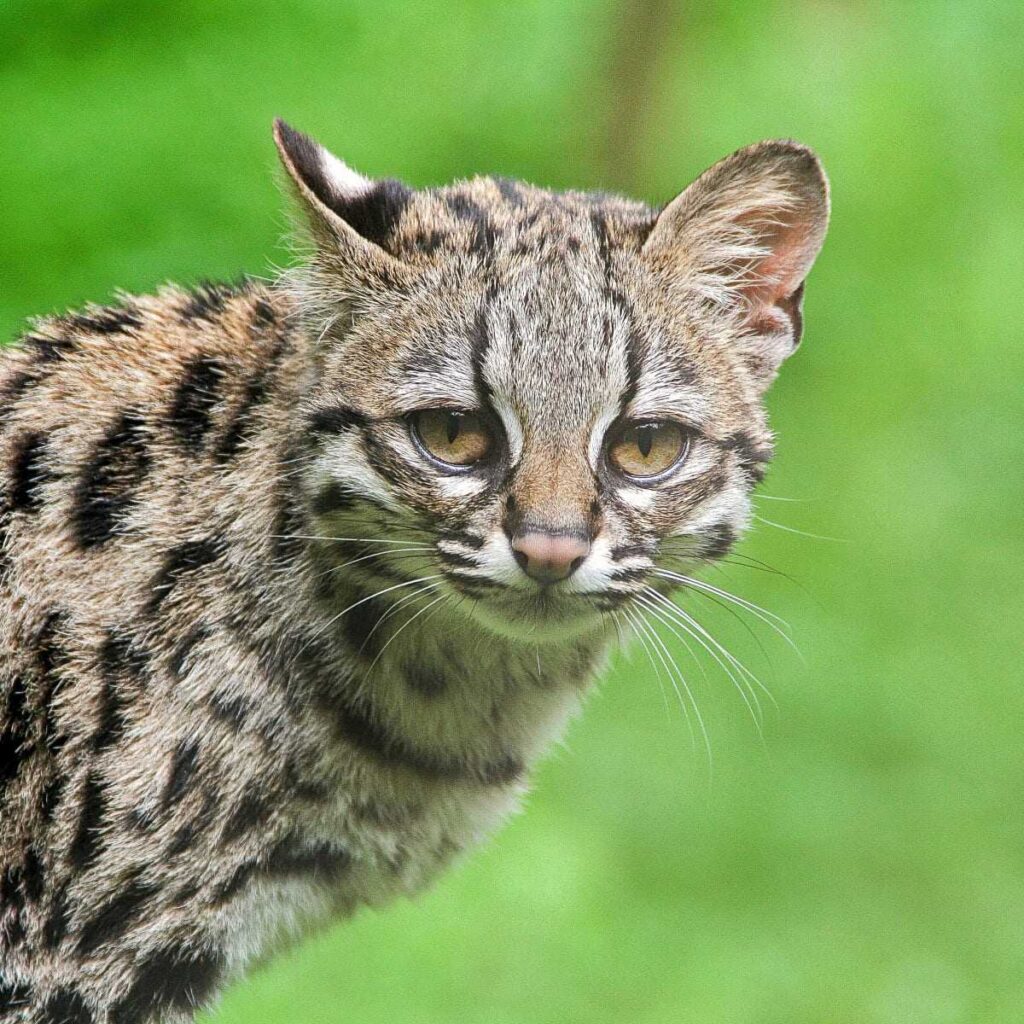
The margay is a small wild cat that lives in the forests of Central and South America. They have a beautiful coat of brown or yellow fur with black spots and rosettes, and large eyes that help them see at night.
They are sometimes called the tree ocelot because they are very good at climbing and jumping on the treetops. They can even hang upside down from a branch by one foot!
The margay is a solitary and nocturnal animal that hunts mostly on the ground.
The margay is a serial monogamous animal that mates with one partner at a time. They have an estrous cycle that lasts between 32 and 46 days, and females are in heat for 4 to 10 days.
The gestation period lasts 81 to 84 days, and most females give birth to one kitten per litter, rarely two.
The kittens are born blind and helpless and stay with their mother for about 10 months before becoming independent.
Margays do not reproduce easily in captivity, and often most zoo animals are wild born.
5. Clouded Leopard
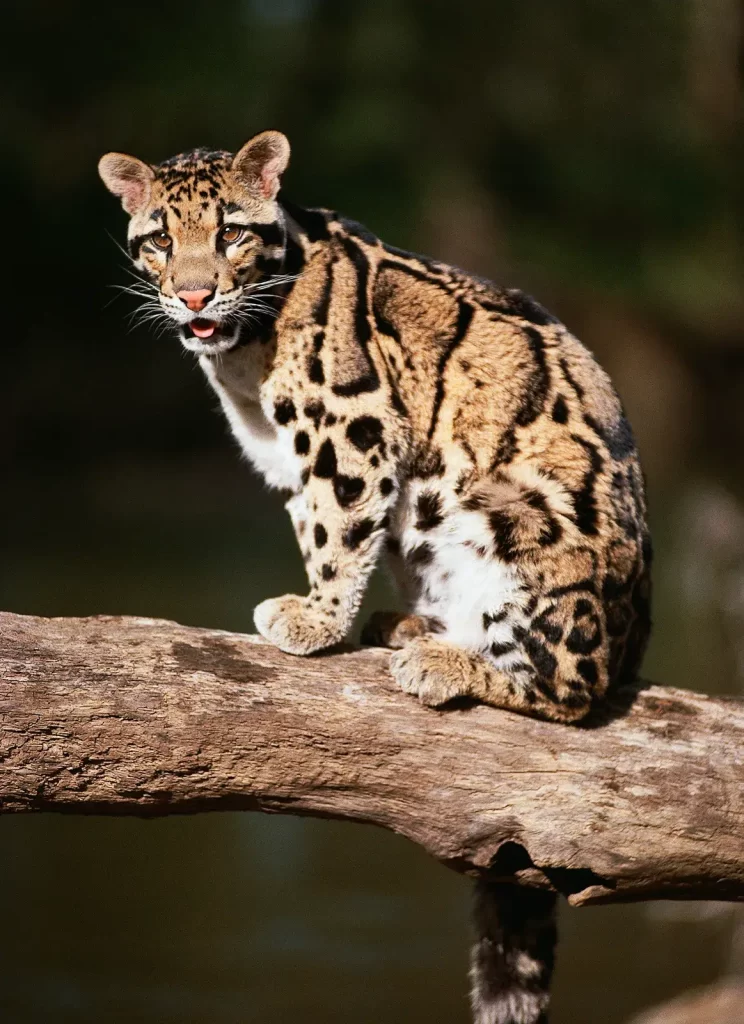
The clouded leopard, found in the Asian forests spanning from Nepal to Borneo, is a distinct species within the Pantherinae subfamily.
Unlike their name suggests, they are not a type of leopard but rather a separate wild cat.
With their origins dating back approximately 6 million years, they stand as one of the oldest cat species, separate from lions, tigers, jaguars, and leopards.
Renowned for their climbing prowess, the clouded leopard possesses the ability to descend trees headfirst.
Primarily active during the night, they pursue prey such as deer, pigs, monkeys, and birds on the forest floor.
Typically solitary and territorial, they use urine and claw marks to demarcate their range.
While communication takes the form of growls, hisses, and meows, they lack the ability to roar or purr.
6. Savannah Cat

The Savannah cat, a hybrid breed resulting from crossing an African serval with a domestic cat, has a distinctive appearance characterized by a spotted coat, large ears, and long legs.
It ranks among the world’s largest and most expensive cat breeds.
This intelligent, active, and social feline takes pleasure in engaging with both humans and other animals.
They can be trained to walk on a leash, retrieve objects, and perform various tricks.
Additionally, they display a fondness for exploration and scaling elevated areas.
The Savannah cat exhibits loyalty and affection towards their owners, although they may exhibit shyness or wariness around unfamiliar individuals.
Their vocalizations include meows, chirps, and hisses, but they lack the ability to roar or purr.
7. Bengal Cat
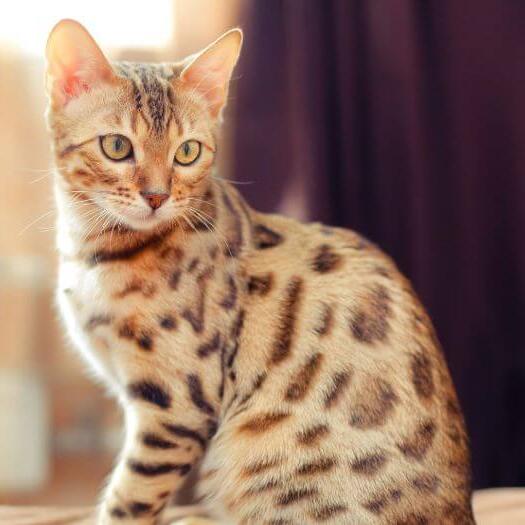
The Bengal cat is a hybrid cat created by crossing an Asian leopard cat with a domestic cat, especially the spotted Egyptian Mau.
They have a wild appearance with a coat that shows spots, rosettes, or marbling patterns. They are one of the world’s largest and most intelligent cat breeds.
The Bengal cat is affectionate, energetic, and social and enjoys interacting with people and other pets.
They can be trained to walk on a leash, fetch, and do tricks. They also like to explore and climb high places.
The Bengal cat is loyal and friendly with their owners but may be shy or wary of strangers. They communicate with meows, chirps, and hisses, but cannot roar or purr.
8. Ocicat
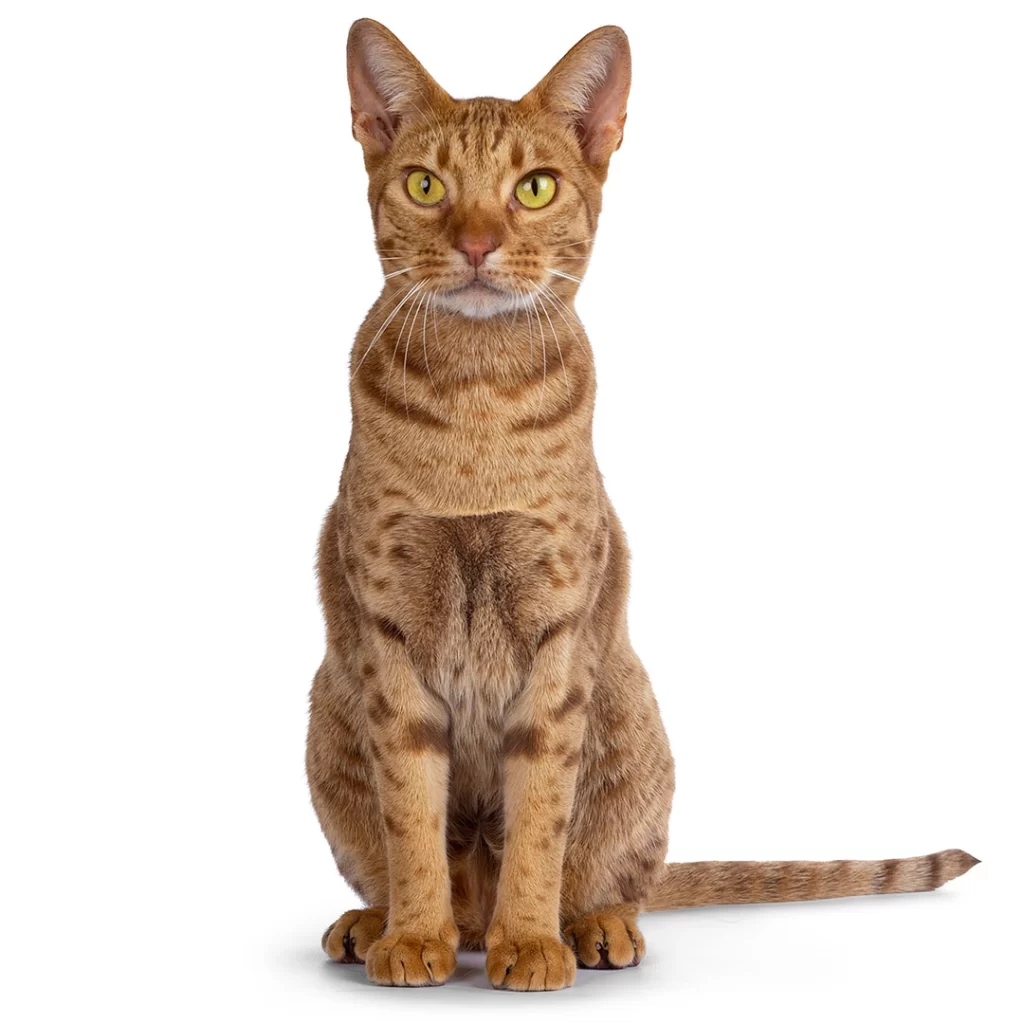
The Ocicat cat is a domestic cat that looks like a wild cat, with a spotted coat and an athletic body.
The breed was created by crossing an Abyssinian, a Siamese, and an American Shorthair. The species is named after the ocelot, a small wild cat that has a similar appearance.
The Ocicat cat is intelligent, energetic, and social and enjoys interacting with people and other pets. They can be trained to walk on a leash, fetch, and do tricks.
They also like to explore and climb high places. The Ocicat cat is friendly and outgoing but may be shy or wary of strangers.
They communicate with meows, chirps, and hisses, but cannot roar or purr.
9. Sphynx Cat
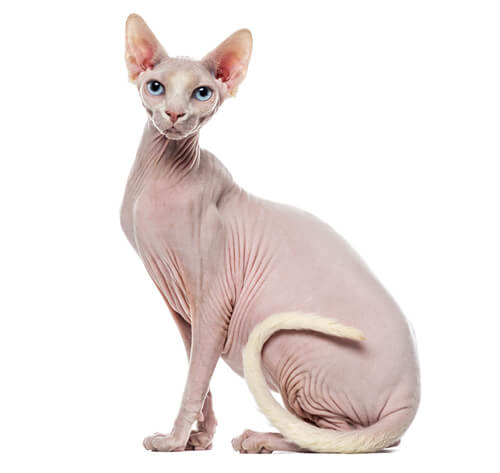
The Sphynx cat is a domestic cat and is known for their lack of fur or hair.
The breed was created by crossing a hairless cat with other cats that carried the same genetic mutation, starting in Canada in the 1960s.
The breed is named after the ancient Egyptian sphinx, a mythical creature with a human head and a lion’s body.
The Sphynx cat is intelligent, energetic, and social and enjoys interacting with people and other pets.
They can be trained to walk on a leash, fetch, and do tricks. They also like to explore and climb high places.
The Sphynx cat is friendly and outgoing but may be shy or wary of strangers. They communicate with meows, chirps, and hisses, but cannot roar or purr.
10. Peterbald Cat
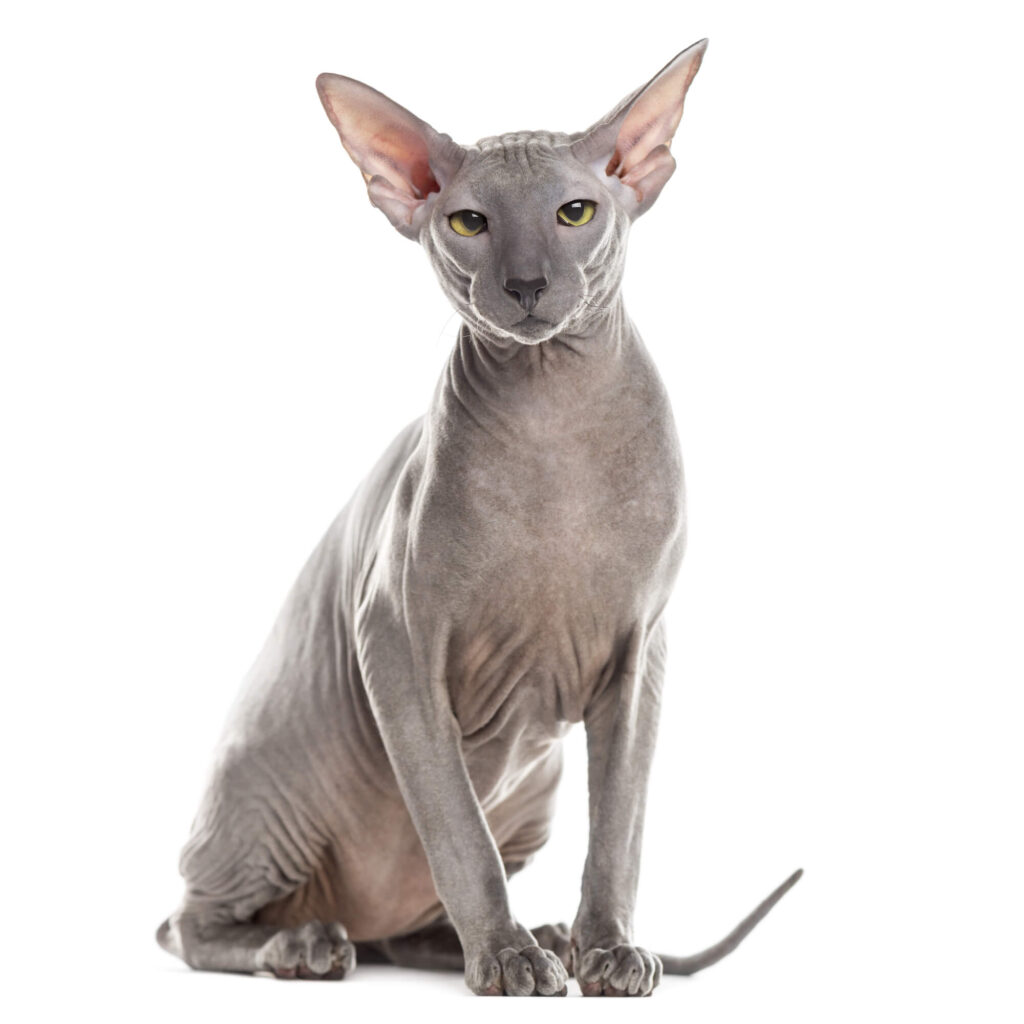
The Peterbald cat is a hairless or semi-hairless cat that originated in Russia in 1994. The breed was created by crossing an Oriental Shorthair with a Donskoy cat, a hairless breed with a dominant gene for hair loss.
The breed is named after the city of St. Petersburg, where they were developed by Olga Mironova.
The Peterbald cat is an intelligent, energetic, and social cat that enjoys interacting with people and other pets. They can be trained to walk on a leash, fetch, and do tricks. They also like to explore and climb high places.
The Peterbald cat is friendly and outgoing but may be shy or wary of strangers. They communicate with meows, chirps, and hisses, but cannot roar or purr.
11. Canadian Lynx

The Canadian lynx, also known as Lynx canadensis, is a medium-sized wild cat found in the forests of North America, particularly in Alaska and Canada.
They have distinctive features such as long, dense fur, triangular ears adorned with black tufts, and broad paws resembling snowshoes.
Sporting yellow-green eyes and a short tail with a black tip, this lynx stands around 20 inches (51 cm) tall at the shoulder and weighs between 20 and 40 pounds (9 and 18 kg).
As a specialist predator, the Canadian lynx primarily preys on snowshoe hares, a type of large rabbit that undergoes seasonal coat color changes.
The lynx and the hare share a closely intertwined ecological relationship, their populations fluctuating in cycles lasting approximately 10 years.
When hunting the hare, the lynx adopts a stalking approach, ultimately pouncing on their prey and delivering a decisive bite to the neck or head for a quick kill.
During periods of hare scarcity, the lynx may resort to consuming other animals like rodents, birds, and deer.
12. LaPerm cat

The LaPerm cat is a domestic cat with a curly coat that originated from the United States. The breed was created by a natural mutation that occurred in a litter of barn cats in Oregon in 1982.
The first curly-coated kitten was named Curly by her owner Linda Koehl, who later developed the breed by crossing Curly and her offspring with other cats.
The breed is named after the word “perm”, which refers to the permanent wave hairstyle.
The LaPerm cat is an intelligent, playful, and affectionate cat that enjoys interacting with people and other pets.
They can be trained to walk on a leash, fetch, and do tricks. They also like to explore and climb high places.
The LaPerm cat is friendly and outgoing but may be shy or wary of strangers. They communicate with meows, chirps, and hisses, but cannot roar or purr.
13. Maine Coon
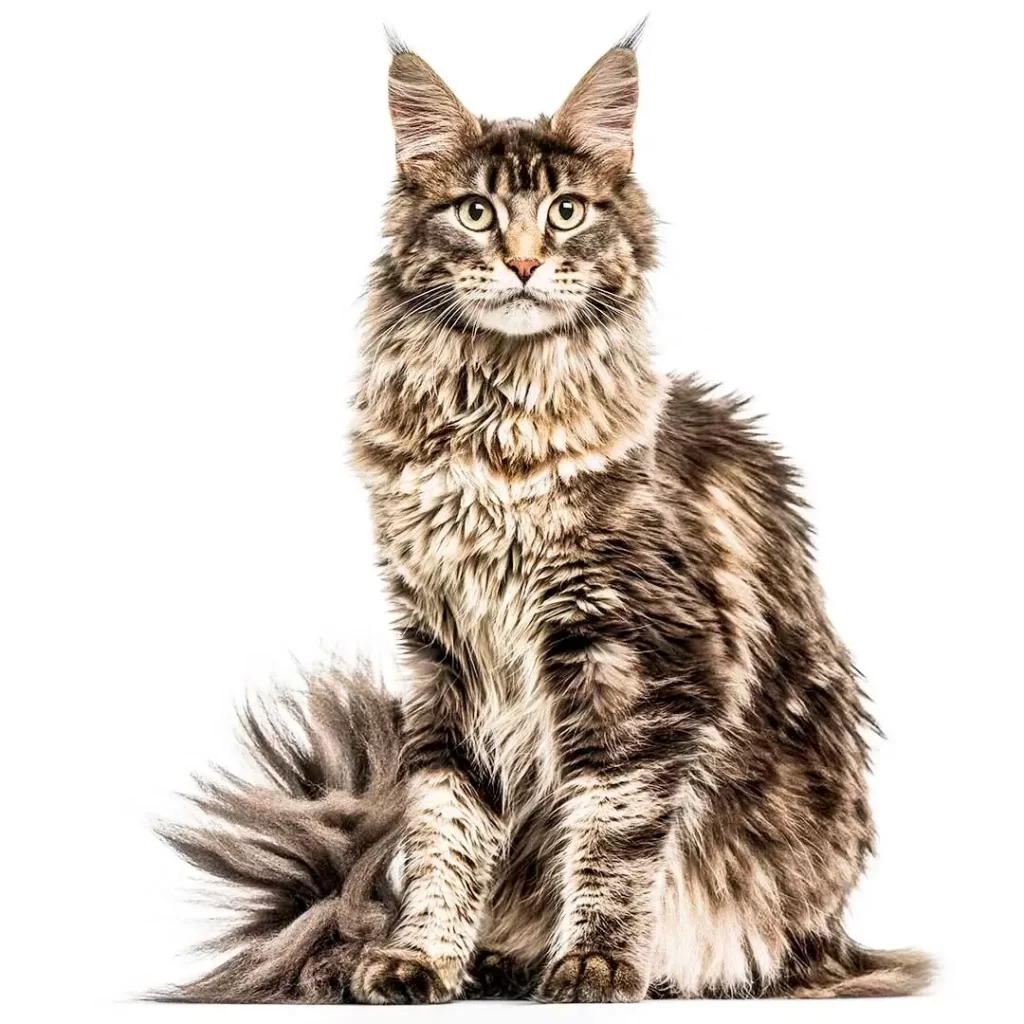
The Maine Coon cat, native to Maine, USA, is a sizable domestic feline sporting a thick, lengthy coat and a luxuriant tail.
They stand out as the official state cat of Maine and hold the distinction of being one of the oldest natural breeds in North America, as well as one of the most widely adored breeds worldwide.
This muscular and robust cat typically weighs between 9 and 20 pounds. They have a broad chest, a wedge-shaped head, generously sized ears adorned with tufts, and almond-shaped eyes.
The Maine Coon’s coat ranges from medium to long length and can exhibit a variety of colors and patterns.
However, regardless of their appearance, the cat always possesses a ruff around their neck and longer hair on their belly and legs.
The coat’s water-resistant nature aids the cat’s survival in frigid climates. Finally, the Maine Coon’s tail is lengthy and fluffy, reminiscent of that of a raccoon.
14. Bobcat
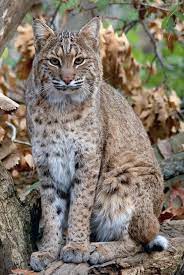
The bobcat, scientifically known as Lynx rufus, claims North America as their home, stretching from the southern edges of Canada to Oaxaca in Mexico.
This wild feline holds the distinction of being among the most diminutive members in the Lynx genus, sharing this classification with the Canada lynx and Eurasian lynx. Their name derives from their abbreviated, black-tipped tail.
Their fur stippled and varying from reddish-brown to gray, along with unique black bars on their front legs, gives them a distinctive appearance.
This bobcat thrives in diverse environments – forests, deserts, swamps, and even urban landscapes.
They exhibit predominantly nocturnal and twilight-active behavior, with their diet consisting primarily of rabbits and hares, supplemented by rodents, birds, deer, and other available prey.
The bobcat employs techniques of stealth and surprise to ensnare prey, even those thrice their size, and stows away large catches for later meals.
Their behavior leans towards territorial and solitary, barring the mating season that spans from winter to spring. To claim their territory, they use urine, feces, and claw marks.
15. Toyger Cat
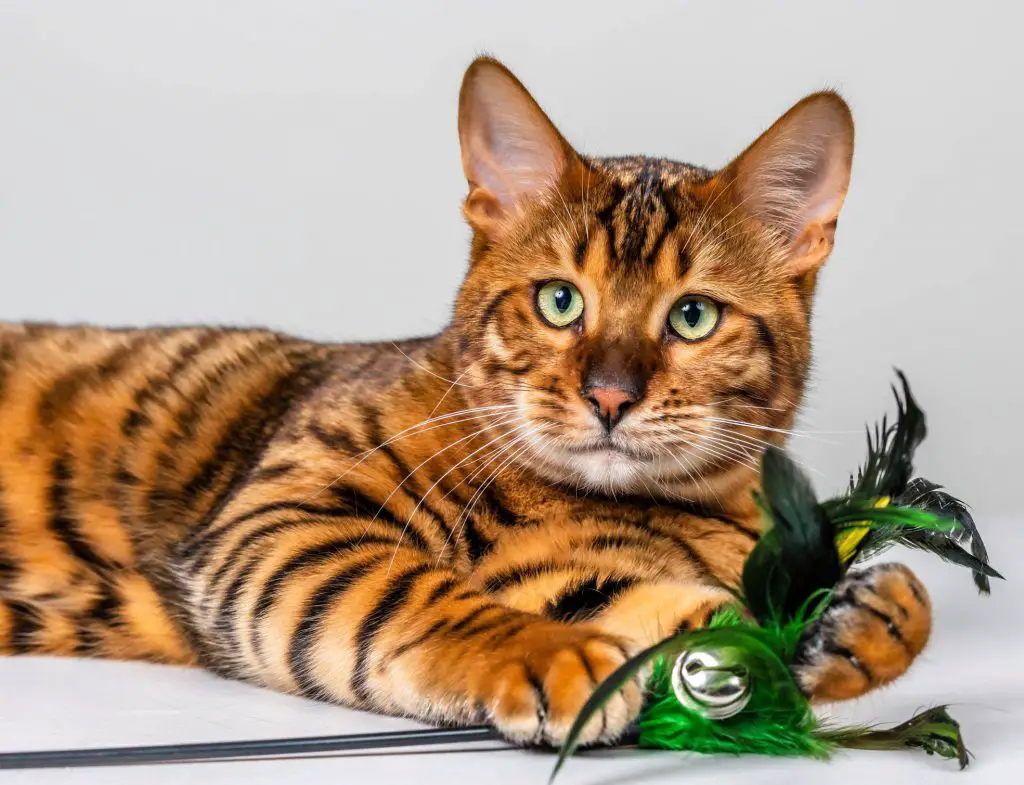
The Toyger cat is a domestic cat with a striped coat that resembles a toy tiger. The breed was created by Judy Sugden, a breeder from California, who started crossing Bengal cats with domestic shorthaired tabbies in the late 1980s.
The breed is meant to raise awareness and conservation of tigers in the wild.
The Toyger cat is an intelligent, playful, and affectionate cat that enjoys interacting with people and other pets.
They can be trained to walk on a leash, fetch, and do tricks. They also like to explore and climb high places.
The Toyger cat is friendly and outgoing but may be shy or wary of strangers. They communicate with meows, chirps, and purrs, but cannot roar or hiss.
16. Abyssinian
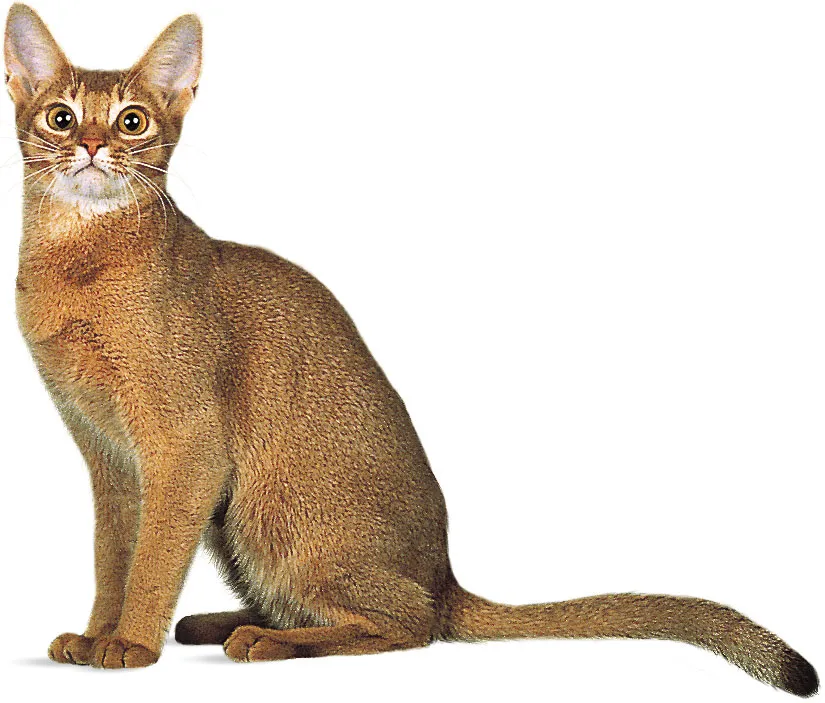
The Abyssinian cat, also known as Aby, is a domestic cat with a short coat that has a distinctive ticked pattern, in which each hair has bands of different colors.
This breed is one of the oldest natural breeds in the world, and their origin is uncertain. Some believe that they originated from the coastal regions of the Indian Ocean and Southeast Asia, while others claim that they descended from the sacred cats of ancient Egypt.
The breed was first exhibited in England in 1871 and was named after Abyssinia (now Ethiopia), where one of the cats was supposedly imported from.
The Abyssinian cat is an intelligent, playful, and affectionate cat that enjoys interacting with people and other pets. They can be trained to walk on a leash, fetch, and do tricks. They also like to explore and climb high places.
The Abyssinian cat is friendly and outgoing but may be shy or wary of strangers. They communicate with meows, chirps, and purrs, but do not vocalize much.
17. Turkish Van
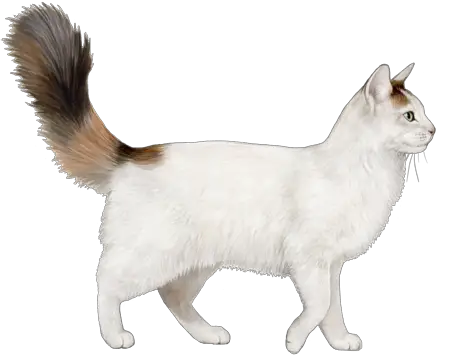
The Turkish Van cat is a semi-long-haired cat with a bicolor coat that originated from Turkey.
The breed was developed in the United Kingdom from a selection of cats obtained from various cities of modern Turkey, especially southeast Turkey.
This breed is named after the city and lake of Van, where some of the cats were supposedly imported from. Turkish Van cats are also known as the “swimming cat” because of their love of water.
The Turkish Van cat is an intelligent, playful, and affectionate cat that enjoys interacting with people and other pets. They can be trained to walk on a leash, fetch, and do tricks. They also like to explore and climb high places.
The Turkish Van cat is friendly and outgoing but may be shy or wary of strangers. They communicate with meows, chirps, and purrs, but do not vocalize much.





